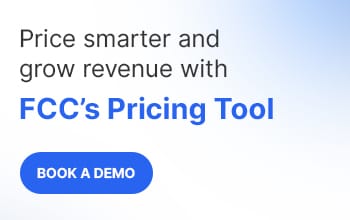Table of Contents
- What is promotional pricing?
- Types of Promotional Pricing
- Benefits of promotional pricing
- Challenges of promotional pricing
- Best practices to implement promotional pricing
- Conclusion
What is Promotional Pricing?
Promotional pricing is a strategic pricing method where retailers strategically lower the prices of their products to attract customers, increase sales, or gain market share. This strategy is often used during product launches, special events, seasonal sales, or to clear excess inventory. Promotional pricing can include discounts, buy-one-get-one deals, limited-time flash sales, or bundled products.
The main objective is to create a sense of time sensitivity and drive immediate customer action. This method is especially effective during seasonal sales, the holiday season, or specific promotional periods when customers are more likely to seek out deals. While effective in boosting short-term sales, retailers must carefully plan these promotions to avoid negatively impacting their brand image or long-term profitability.
Types of promotional pricing
Each promotional pricing technique has advantages and challenges. The key is to carefully assess which strategy best aligns with the business goals and target market.
- Loss Leader: This technique involves selling a product at a reduced price, often below cost, to draw customers into the store. While it can boost sales and increase foot traffic, it can also negatively impact cash flow if not managed carefully.
- Bundled Offers: Combining multiple products or services and selling them at a lower price than if purchased individually. It can enhance the perceived value of the offer and encourage customers to buy more, but it may also diminish the perceived value of individual items at full price.
- Bulk Purchase Discounts: Offering price reductions based on the quantity purchased encourages customers to buy in larger volumes. This can help boost sales and drive repeat business, but it can also reduce profit margins if the discounts are too significant.
- Discount Vouchers and Coupons: Vouchers provide a discount on particular products and can be an effective way to grab customers' attention and drive customer acquisition. However, they can also condition customers to only buy when discounts are available, potentially affecting the perception of regular pricing and undermining positive purchasing behavior.
Benefits of promotional pricing
Let's have a look at some of the standout benefits of using promotional pricing strategies for retailers:
- Boosts Store Traffic: Promotional pricing attracts more customers on retail platforms, increasing foot traffic. This surge in visitors not only drives immediate sales but also creates opportunities for upselling and cross-selling other products.
- Clears Excess Inventory: Retailers can effectively clear out slow-moving or seasonal inventory through promotional pricing. By offering discounts or deals, retailers can free up shelf space for new products, reducing storage costs and inventory holding times.
- Builds Customer Loyalty: Offering value through promotional pricing helps retailers build customer loyalty. Shoppers appreciate the savings, which enhances their shopping experience and encourages repeat visits, fostering a loyal customer base over time.
- Increases Brand Awareness: Retailers can leverage promotional pricing to raise brand awareness. Special deals and discounts can attract attention, create buzz, and enhance the retailer's visibility in a crowded market, ultimately attracting more potential customers.
- Enhances Competitive Positioning: By implementing promotional pricing, retailers can better position themselves against competitors. Offering attractive deals helps retailers stand out, capture price-sensitive shoppers, and gain a competitive advantage in the market.
Challenges of promotional pricing
Promotional pricing can be an effective strategy for retailers, but it comes with several challenges that need careful consideration to ensure profitability and long-term success.
- Profit Margin Erosion: Offering discounts can attract customers, but if not managed properly, it can significantly erode profit margins, making it difficult to sustain the business in the long run.
- Customer Expectation Management: Frequent promotions can lead customers to expect discounts regularly, which can undermine the perceived value of products and make it challenging to sell at regular prices.
- Inventory Management: Promotional pricing can lead to rapid inventory depletion, causing stockouts and customer dissatisfaction. Conversely, overestimating demand can result in excess inventory and increased holding costs.
- Competitive Response: Competitors may quickly respond with similar or better promotions, diluting the impact of the original promotion and potentially leading to a price war that can harm all involved retailers.
Best practices to implement promotional pricing
To maximize the effectiveness of promotional pricing, retailers should adhere to the following best practices:
- Establish Clear Goals: Define specific objectives for each promotion, such as increasing sales, clearing inventory, or attracting new customers.
- Understand Customer Preferences: Leverage customer data to identify optimal timing, duration, and types of promotions that resonate with the target audience.
- Avoid Excessive Discounting: While discounts can stimulate sales, excessive discounting can erode profit margins. Employ discounts strategically and explore alternative promotions like bundling or loyalty programs.
- Effective Communication: Clearly convey promotional details through multiple channels such as email, social media, and advertising banners.
- Continuous Monitoring and Evaluation: Regularly assess promotional performance against established KPIs and adjust strategies as needed.
- Prioritize Profitability: Conduct thorough cost analyses and set appropriate pricing levels to ensure that promotions do not significantly impact profitability.
Conclusion
Promotional pricing is a powerful tool for retailers to attract customers, boost sales, and increase market share. However, it comes with challenges such as profit margin erosion, managing customer expectations, inventory issues, competitive pricing responses, and execution complexity. Retailers must carefully evaluate and balance these factors to ensure that promotional pricing strategies help achieve their business objectives and ensure long-term success.
FAQ
A real-life example of promotional pricing can be seen at Walmart during their 'Rollback' events. Walmart temporarily reduces the prices of various products, such as electronics, groceries, and household items, to attract customers and boost sales.
By creating a sense of time-limited availability, these promotions motivate customers to act quickly and purchase before the original prices are reinstated. This strategy helps Walmart increase foot traffic, clear out inventory, and enhance customer loyalty by offering attractive deals.
While promotional pricing is not prohibited, it must adhere to the guidelines established by the Federal Trade Commission (FTC) and specific state regulations. The FTC's Guides Against Deceptive Pricing ensures that businesses do not mislead consumers by offering false discounts or deceptive pricing practices.
As long as promotional pricing is implemented transparently and in good faith, it remains a legal and effective marketing strategy.
Determining the optimal discounted price for your product is a complex balance.
Factors to consider include your profit margin, competitor pricing, customer demand, and the goal of the discount (e.g., clearing inventory, attracting new customers or boosting cash flow).
Generally, a discount of 10-20% is seen as a good starting point. However, for seasonal items like winter coats or specific promotions, larger discounts might be necessary. Calculating the impact on your revenue and profit to ensure the discount is worthwhile is essential. Detailed competitor research and data analysis through pricing software like FCC Pricing Manager can help you find the sweet spot.
To determine the promo pricing, start by assessing the product's market value and the cost of goods sold to ensure profitability. Analyze competitors' pricing strategies to remain competitive. Consider the target audience and their price sensitivity. Factor in the desired profit margin and promotional objectives, such as increasing sales volume or clearing inventory.
Finally, different price points will be tested, and the results will be monitored to optimize the promotional pricing strategy for maximum effectiveness. Using dynamic pricing platforms like the Dynamic Pricing Engine from Flipkart Commerce Cloud can make this process easier for you.

